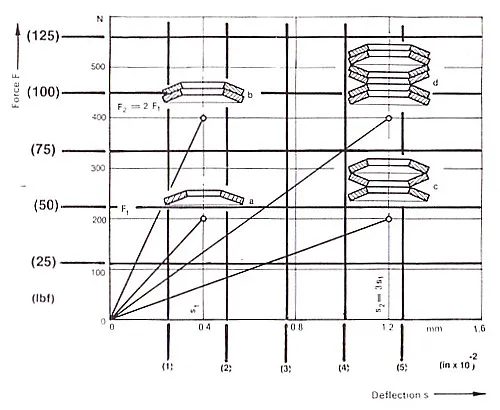The radially straight conical disc spring, which has a rectangular cross section, is the most commonly used type of disc spring. Loads are applied uniformly around the inner and outer circumference and result in elastic deflection. The respective value of load and deflection are the characteristic of the disc spring.
For a single disc according to the Conventional Disc Spring Shape Graph, the spring character line is curved and regressive as shown in the Key Bellevilles Engineering Handbook. The degree of curvature depends entirely on the relation of free height (h0) to the material thickness (t). At small values of h0/t the character line is almost straight but curvature decreases as the ratio h0/t increases. In the special case of h0/t equals √ 2 the graph has an almost horizontal portion towards full deflection. Note that with a uniform conical cross section a thin disc will give a load versus deflection graph of greater curvature than one of greater thickness.
The calculation of character lines of spring stacks begins with the character line of a single disc. For a set of parallel discs the load for a single disc at the same deflection is multiplied by the number of discs stacked in parallel. Conversely, when springs are stacked in series, the load on a percent deflection basis remains the same as the percent deflected by a single spring. The deflection for one disc is multiplied by the number of springs. For a spring stack consisting of spring sets arranged in series, the spring load increases with deflection.
